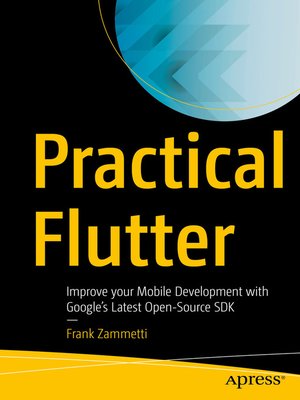Practical Flutter
ebook ∣ Improve your Mobile Development with Google's Latest Open-Source SDK
By Frank Zammetti

Sign up to save your library
With an OverDrive account, you can save your favorite libraries for at-a-glance information about availability. Find out more about OverDrive accounts.
Find this title in Libby, the library reading app by OverDrive.



Search for a digital library with this title
Title found at these libraries:
| Library Name | Distance |
|---|---|
| Loading... |
Practical Flutter will leave you with a solid grasp of how to build apps with Flutter, and springboard into creating more advanced apps on your own. By the time your journey through this material concludes, another larger one will begin as you springboard, well-prepared, into the larger world of Flutter development, tackling any project that comes your way with aplomb. Practical Flutter is a learning adventure you won't want to miss.
What You'll Learn
Mobile developers who are looking to build for multiple mobile platforms and trying to do so with a codebase that is largely the same across all. Basic knowledge of iOS and Android generally, and some general programming experience is expected.







